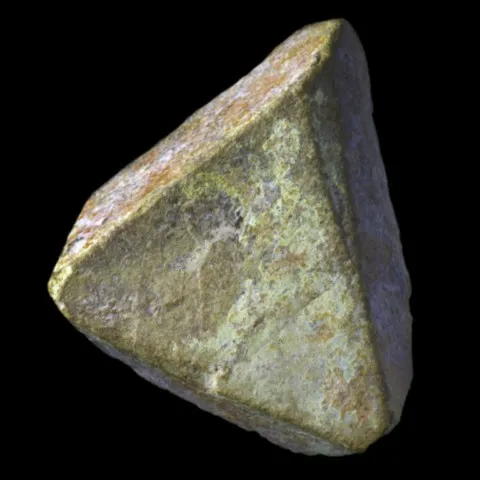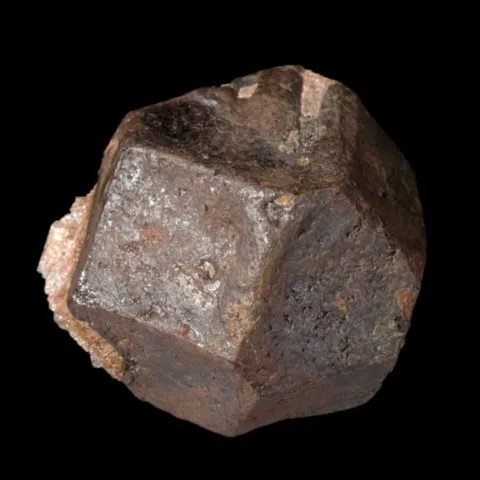BETAFITE
Class : Oxides and hydroxides
Subclass : Oxides
Crystal System : Cubic
Chemistry : (Ca,U)2(Ti,Nb,Ta)2O6(OH)
Rarity : Rare
Betafite is a radioactive mineral that belongs to the pyrochlore group but differs from it from a chemical point of view by high uranium (up to 27% UO3) and titanium content. It owes its name to its locality of discovery : Betafo in Madagascar. It is a typical mineral of granites and potassic beryl pegmatites with euxenite, fergusonite, allanite, much more rarely carbonated pegmatitoids. Unalterable, it easily concentrates in alluvium. Betafite essentially forms octahedral crystals, frequently of considerable size but poorly formed, sometimes rhombododecahedra, or compact masses. Betafite has an adamantine luster that quickly tarnishes to vitreous to resinous or waxy. Its color is initially black-bluish to black-greenish, sometimes brown-yellowish, but most of the crystals are metamict and are covered with a very characteristic yellow superficial patina, which can penetrate to the heart of the crystal with the appearance of an intermediate yellow to yellow-green zone. After playing a historic role in the production of radium before 1940, betafite is today an occasional ore of rare earths and uranium.
Betafite in the World
Betafite in France
Twinning and special crystallizations
Fakes and treatments
Hardness : 3 to 5.5
Density : 23.7 to 4.9
Fracture : Irregular to conchoidal
Streak : Yellowish white
TP : Opaque
IR : 1.910 to 2.197
Birefringence : None
Optical character : None
Pleochroism : None
Fluorescence : None
Solubility : Acids
Magnetism : Paramagnetic
Radioactivity : Medium






